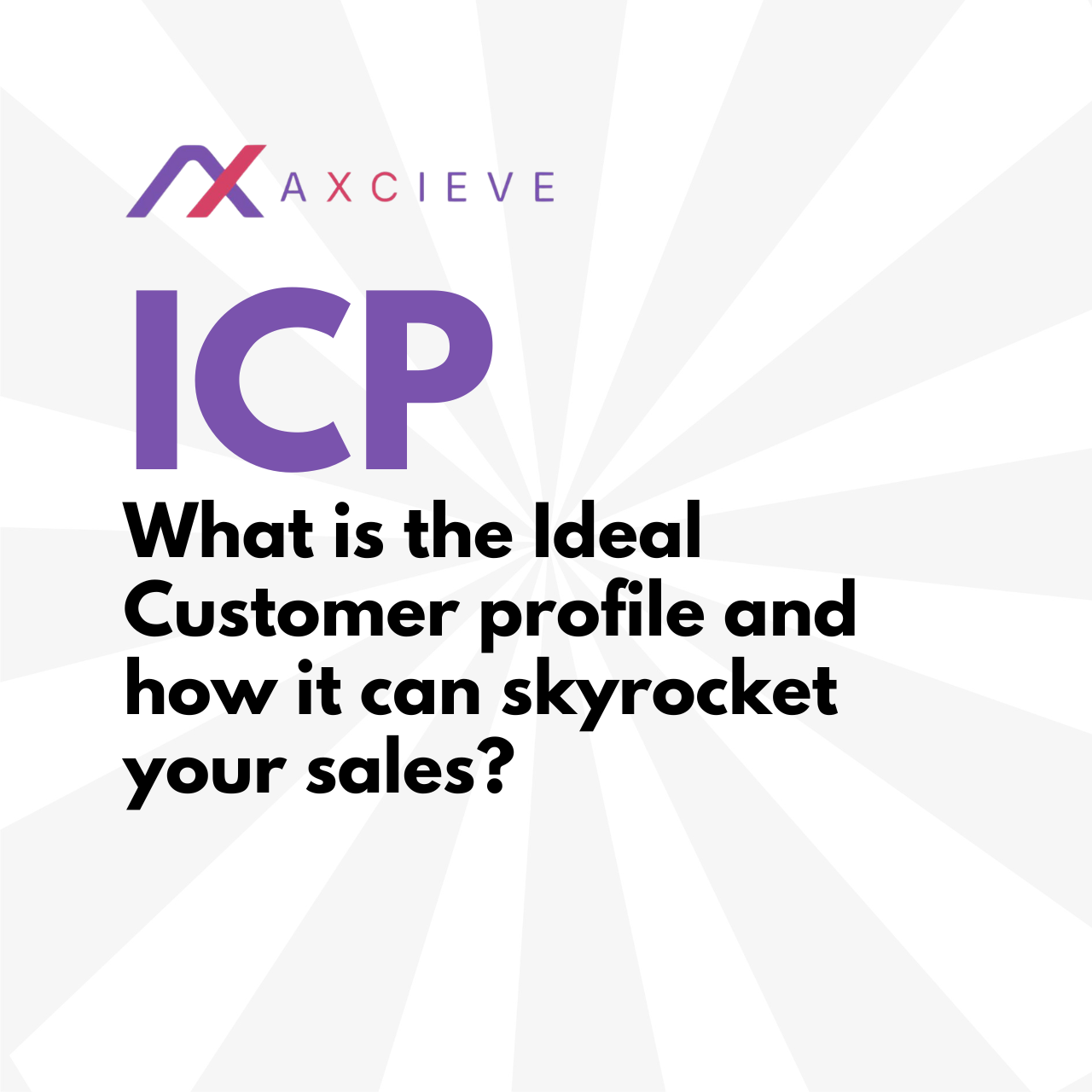Sales teams are always under constant pressure to close deals faster and more efficiently. But what if you could optimize your sales process by focusing on the right customers? This is where the Ideal Customer Profile (ICP) comes into play. Whether you’re in B2B or B2C, defining your ICP can revolutionize your sales approach, increase conversion rates, and boost revenue.
Let’s explore how ICP can benefit your sales team, supported by real-world case studies and insights.
What is an Ideal Customer Profile (ICP)?
An Ideal Customer Profile (ICP) is a detailed description of the type of customer that is most likely to benefit from your product or service and, in turn, provide the most value to your business. Unlike a generic buyer persona, an ICP focuses on firmographics (e.g., company size, industry, revenue), pain points, and buying behaviors.
For instance, HubSpot defines an ICP as a strategic tool that aligns sales and marketing efforts by identifying key customer characteristics such as industry, size, and decision-making roles. In the B2B space, ICPs often include attributes like company size, industry, and specific challenges.
For example, a software company targeting small and medium-sized enterprises (SMEs) in retail might define its ICP as companies with 50-500 employees, annual revenues between $10 million and $50 million, and pain points such as inventory management and scaling e-commerce platforms.
Why is Ideal Customer Profile (ICP) Important for Sales Teams
Sales teams that leverage an ICP can dramatically improve their performance and efficiency. Here’s how:
- Better Lead Qualification
By aligning sales efforts with the ICP, teams can focus on leads that are most likely to convert. This ensures that resources are spent on high-quality prospects rather than wasted on unqualified leads. According to Salesforce, businesses that implement ICP experience more effective lead scoring and prioritization, leading to higher-quality engagements.- Case Study: Drift
Drift, a conversational marketing platform, used Ideal Customer Profile to target companies that matched their ideal customer characteristics. By refining their lead qualification process, they reduced unqualified leads by 40% and improved their sales pipeline quality, resulting in a 25% increase in closed deals.
- Case Study: Drift
- Higher Conversion Rates
Sales reps who understand the specific needs and pain points of their ideal customers can tailor their pitches to directly address these issues. Forbes highlights that businesses with a clear ICP often see a significant boost in conversion rates, as tailored messaging resonates more with prospects. - Shortened Sales Cycle
Focusing on qualified leads enables sales teams to engage in more relevant conversations, leading to faster decision-making. HubSpot’s research found that companies with a well-defined ICP reduced their sales cycle length by 30%, as prospects were already a strong fit for the solution.- Case Study: XYZ Tech Solutions
XYZ Tech Solutions, a B2B SMB offering cloud-based solutions for retail, shortened its sales cycle by 30% by targeting SMBs with 50-500 employees and annual revenues between $10 million and $50 million. Their refined ICP allowed them to focus on prospects who were already primed for their solutions, leading to faster deal closures.
- Case Study: XYZ Tech Solutions
- Increased Revenue
Targeting customers that fit your Ideal Customer Profile not only improves conversion rates but also increases deal size. When sales professionals target businesses that are a perfect fit, they can identify upsell and cross-sell opportunities more effectively. Salesforce notes that businesses leveraging ICPs often see a 20% increase in revenue within the first year of implementation.
Real-World Example: How Zoom Used Ideal Customer Profile to Scale
When Zoom started its B2B sales efforts, it used Ideal Customer Profile to target specific industries that required seamless communication tools. Their ICP included:
- Companies with remote or hybrid workforces
- Industries like technology, education, and healthcare
- Businesses with 100-1,000 employees
By focusing on these characteristics, Zoom was able to grow its enterprise customer base by 60% in just one year. Their targeted approach not only increased conversions but also boosted customer retention, as they were solving real pain points for their ideal customers.
How to Define Your Ideal Customer Profile
Defining your Ideal Customer Profile involves analyzing your current customer base, identifying patterns, and understanding the needs of your most successful clients. Here are the key steps:
- Analyze Existing Customers
Look at your most successful customers. What do they have in common? HubSpot suggests examining metrics like industry, company size, revenue, and key decision-makers to identify patterns. - Define Key Attributes
Focus on firmographics (e.g., industry, size), demographics (e.g., decision-maker roles), and psychographics (e.g., pain points and goals). - Use Data Tools
Leverage CRM systems (although they are falling short), analytics tools, and customer feedback to refine your ICP. Salesforce recommends continuously updating your ICP based on evolving customer behaviors and market trends.- AI Sales assistant platform gives better feedback analysis, analysis and Actionable insights. Read more about it.
- Create a Detailed Profile
Build a comprehensive profile that includes the customer’s pain points, decision-making process, and how your solution addresses their challenges.
Conclusion
By defining and leveraging an Ideal Customer Profile (ICP), businesses can focus their sales and marketing efforts on the customers most likely to benefit from their product or service. This targeted approach leads to higher conversion rates, shorter sales cycles, and increased revenue. From Drift’s improved pipeline quality to Zoom’s rapid customer acquisition, Ideal Customer Profile is a proven strategy for driving sales efficiency and growth.

